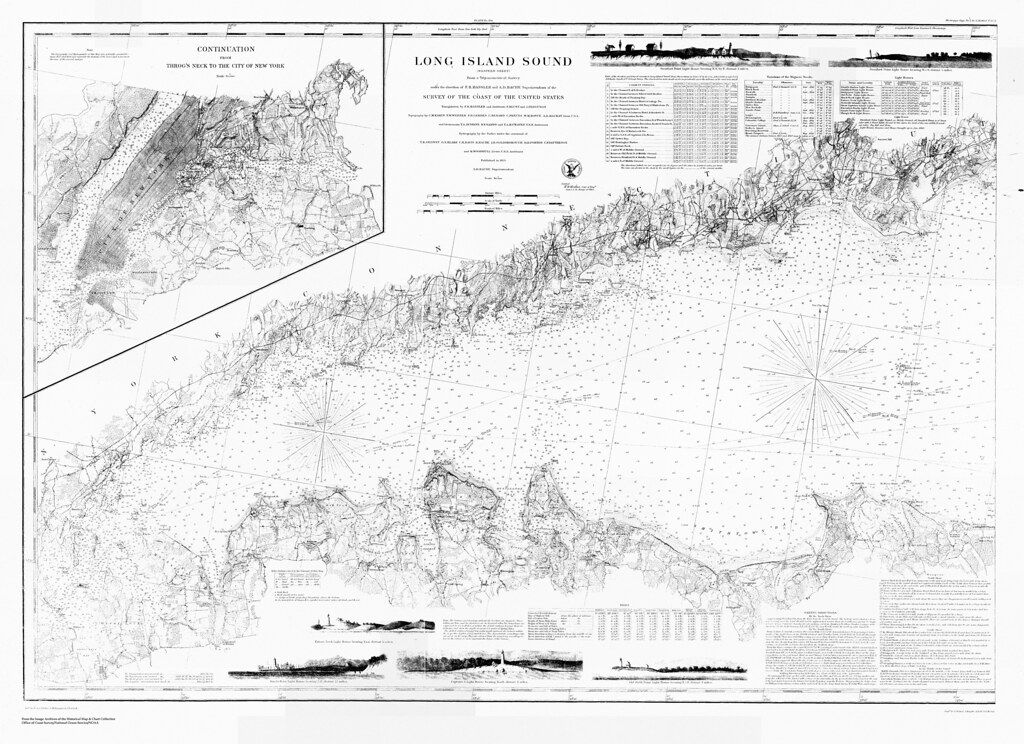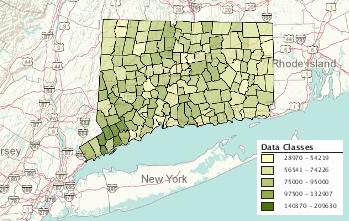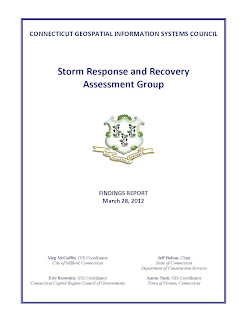Category Archives: Connecticut
Connecticut GeoFocus Newsletter – Spring 2012 Edition
The latest issue of the Connecticut GeoFocus newsletter is now available and includes the following topics:
-
GIS Legislation
-
South Windsor GIS and Web Technologies
-
GEO Tidbits
-
Lightning Mapper
-
Geo-Networking
-
EDDMapS
-
National Alliance for Public Safety GIS Foundation
-
Solar Flares
-
National Electric Generation Siting Study
-
WISE Mission Catalog of Infrared Space
-
Geologic Mapping
Previous issues of Connecticut Geo-Focus are available at:
http://www.ct.gov/gis/cwp/view.asp?a=3174&q=412294
CLEAR Spring 2012 Community and Natural Resources Planning Program Workshops
|
The Center for Land Use Education and Research (CLEAR) Community and Natural Resources Planning Program is pleased to announce two upcoming workshop series – in northwestern and southeastern CT. These workshops will present illustrations and examples of innovative tools and techniques to help towns plan for their future. Refreshments and take-home materials will be provided. Don’t miss them!
Space is limited and registration is on a first come, first served basis. See below for details and online registration.
Questions? Contact Susan Westa @ susan.westa@uconn.edu or 860-774-9600 begin_of_the_skype_highlighting 860-774-9600 end_of_the_skype_highlighting, ext. 24
|
|
|
|
Northwestern CT Workshop Series
Sponsored by Northwestern CT COG & Litchfield Hills CEO
Co-sponsored by Northwest Conservation District, Northwest CT Planning Collaborative & Upper Housatonic Valley National Heritage Area
TIME: All Workshops @ 7:00 – 8:30 PM
Development Alternatives – Susan Westa
DATE: March 29th, 2012
LOCATION: Cornwall Town Hall
Growth & Community Character – Paula Stahl
DATE: April 23rd, 2012
LOCATION: UConn Torrington
Economic Development – Paula Stahl
DATE: May 8th, 2012
LOCATION: Cornwall Town Hall
Affordable Housing – Bruce Hyde
DATE: May 17th, 2012
LOCATION: UConn Torrington
|
|
|
|
Southeastern CT Workshop Series
Sponsored by Southeastern CT COG
TIME: All Workshops @ 7:00 – 8:30 PM
LOCATION: All Workshops at SCCOG
Economic Development Strategies – Paula Stahl
DATE: March 13th, 2012
Growth & Community Character – Paula Stahl
DATE: April 18th, 2012
Planning For the Future of Your Town – Susan Westa
DATE: April 25th, 2012
Win-Win of Subdivision Design – Paula Stahl
DATE: May 16th, 2012
Using CLEAR Web Tools for Local Planning – C Arnold
DATE: May 30th, 2012
|
CLEAR Land Use Academy Basic and Advanced Training Sessions
The 2012 Center for Land Use Education and Research (CLEAR) Connecticut Land Use Academy is now available. Included below is the listing of upcoming sessions:
Advanced Training Academy
Basic Training Academy
The next Basic Training Academy will be held on April 21, 2012 in Haddam at the University of Connecticut Middlesex Cooperative Extension Center.
For a complete listing of the schedule and to register visit: http://clear.uconn.edu/lua/index.htm
New Google Maps Mashup: Historical Centers of Population in Connecticut
 |
| A new Google Maps mashup on the CtSDC website displays historical centers of population in Connecticut (1880-2010). |
Back in October, we posted the latitude and longitudes of the historical centers of population for Connecticut based upon decennial census data from 1880 to 2010. We have added this data to a new Google Maps mashup that can be viewed on the Connecticut State Data Center website. As of the 2010 Census, the population center of Connecticut is near Andrea Court and Yalesville Road in Cheshire. Special thanks to Daniel Czaja for formatting and processing the data!
Is it a Map or a Chart?
 |
Long Island Sound (western sheet) / from a trigonometrical survey under the direction of F.R. Hassler and A.D. Bache |
I’m starting a new adventure and it all came about from playing around with maps! Last month I was hired as the supervisor of the Treworgy Planetarium at Mystic Seaport and that means you’ll probably be hearing less and less from me as an author here at Outside the Neatline. You may be hearing about special events or items of interest that I stumble across or new geographical information related to the maritime tradition. For example, do you know what the difference between a map and a chart? I’ve had to learn quickly!
 |
| Part of a chart, showing Kidds Humbug, Lents Cove From the Mystic Seaport Image Archives |
Reading and using a chart is one of the basic skills that are taught at the Treworgy Planetarium. Concepts such as map projections, scale, taking bearings and plotting headings are covered in the classwork (very geographical). Other course offerings include taking a noon sighting of the sun with a sextant, celestial navigation to find latitude and longitude, and marine weather.
In the next few months I’ll be developing a new blog platform for the Treworgy Planetarium so keep your eyes peeled!
The Atlantic Cities: Bridgeport-Stamford-Norwalk 7th Healthiest Metro
The Atlantic Cities has ranked metropolitan areas using a health index with Bridgeport-Stamford-Norwalk, CT coming in as the 7th healthiest metro. As for other location in New England- Barnstable, MA came in 15th while Burlington, VT came in 20th. The majority of the most unhealthy metros, according to the index, are located in the South and Midwest. The index is based upon two health indicators: the level of smoking and obesity. For more, check out the full article.
CT GIS User to User Network Meeting – January 27
- Election of Steering Committee members
- Election of a new president, secretary, utilities representative, non-profit representative, and member at large
- Discussion on organization by-law revision
- Presentation on Mobile Applications
Census Bureau Releases New Race and Ethnic Demographic Information from the 2010 Census for Connecticut
These Summary File 2 tables add a new layer of detail to the population and housing topics released last year from the 2010 Census. Information, such as age, relationship and homeownership, previously available only for an area’s entire population is now available for specific race and ethnic groups in that community.
Each Summary File 2 table is presented for up to 331 population groups. These include iteration groups for the total population, race alone groups, race alone or in combination groups, multiple-race combinations, American Indian and Alaska Native tribal groupings, detailed Asian groups, detailed Native Hawaiian and Other Pacific Islander groups, detailed Hispanic groups, and race/Hispanic groups.
Geographies Available
The statistics are available for a variety of geographic areas: counties, county subdivisions, places, census tracts, ZIP Code tabulation areas, congressional districts for the 111th Congress, American Indian and Alaska Native areas within the states released, tribal subdivisions, metropolitan areas and Hawaiian home lands.
To preserve confidentiality, only geographic entities with a population of at least 100 for the specified group are available in the summary file.
Accessing the Information
During the embargo period, the Summary File 2 tables can be found on the Census Bureau’s American FactFinder website at <http://factfinder2.census.gov> by using the “Population Groups” filter to select the specific race or ethnic groups of interest. While a variety of tables will be available, a good place to start is the Profile of General Population and Housing Characteristics, which shows a summary of characteristics for one geographic area at a time.
A summary file version of the information is also available for users who want to download the set of detailed tables for all of the geographies within a state and run their own analysis and rankings. The summary file contains two parts: a file with the geographic headers (in fixed-length ASCII format) and a file with the statistical information (in comma-separated ASCII format). The summary file is available for download at <http://www2.census.gov/census_2010/05-Summary_File_2/>.
2006-2010 American Community Survey (ACS) 5 Year Data now available
The United States Census Bureau has released the 2006-2010 American Community Survey (ACS) 5 year estimates! This dataset includes updated socio-economic statistics covering every community in the nation, including all 169 towns in Connecticut. Included below are some examples of the data variables available from the 2006-2010 American Community Survey (ACS) 5 year estimates for Connecticut:
Median Household Income (2006-2010) by Town in Connecticut:
 |
|||
| Click the map above to view interactive map |
View Median Income Data by Town in Connecticut
Ratio of Income to Poverty Level for Families (under .5) (2006-2010) by Town in Connecticut:
 |
| Click the map above to view interactive map |
View Ratio of Income to Poverty Level for Families Data by Town in Connecticut
How can I access the 2006-2010 ACS 5 year estimates data?
The American FactFinder provides access to the 2006-2010 ACS 5 year estimates data for Connecticut as well as the entire nation. From the American FactFinder users can search datasets, download datasets, and create interactive maps based on variables from the ACS.
At what geographic levels is the data available?
The ACS 5 year data is available at the national, state, congressional district, county, county subdivision (town), tract, and block group level. For those users interested in examining block group level data the margin of error values could be significant at the block group level so be sure to review the margin of error values closely as tract level data may provide less error.
Comparing ACS data to 2010 Census
For additional details on the American Community Survey and when/if comparisons of the data can be made to the 2010 census visit: http://www.census.gov/acs/www/guidance_for_data_users/comparing_data/
What if I have questions about using the ACS?
Contact the Connecticut State Data Center at ctsdc@uconn.edu and we will be happy to assist.



